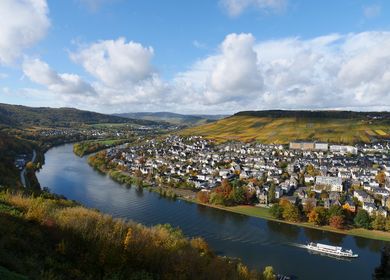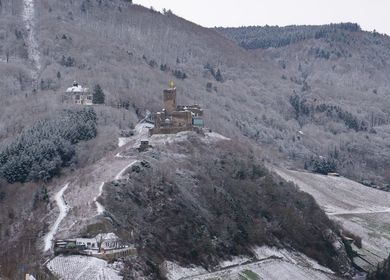Spectacular discoveries
In June 2012 unusually massive remains of a Roman fortification (fort) were found during routine work on the outer fortification (the so-called Zwinger) of Landshut Castle ruin. Archaeologists date these remains, which were integrated into the medieval buildings, into the late 4th and early 5th centuries.
Classification of the discoveries
The newly discovered wall remains on the castle hill in the Bernkastel district are significantly older than the castle built by Heinrich von Finstingen around 1276, which can still be visited today. They are also of much earlier origin than their two predecessors, which were destroyed or grinded in 1017 and 1201 respectively.
Based on the results to date, a rectangular fortification measuring around 60 x 30 metres can be reconstructed, into which five or six almost square towers were integrated.
These towers are very unusual in their construction and can hardly be connected with Late Antiquity or even the Middle Ages. They can only be compared with late Roman castles such as those found in Ludwigshafen or Passau. Two glass and ceramic finds suggest that the walls date from the late 4th or early 5th century. The finds of a stone axe made of clay slate and handmade shards suggest even a pre-Roman use.
The castle as part of an overall military concept
So far, 19 late Roman mountain fortifications above the Moselle can be traced, the castle Landshut is one of them. It probably did not serve as a refuge, but as part of a military concept. In the Moselle valley - at regular intervals - a whole chain of mountain fortifications was built, both to protect the Moselle - which was very important as a waterway - and the new imperial residence in Trier. The initiator is Emperor Constantius I (293-306).
The castle in Bernkastel was only partially overbuilt by the medieval core castle - the ruins of which we can still see today. Therefore it is the first mountain fortification in the Moselle valley whose circumference and ground plan is exactly known.
Conclusion
In the cosmography of the "geographer of Ravenna" the anonymous author writes:"...The places Trier, Neumagen, Bernkastel, Karden and Koblenz are also located on the Moselle...". It was written in the early 8th century, but the geographer used older sources and probably describes the state of the world before the year 496.
In the Latin translation of the original Greek text it says instead of Bernkastel: "Princastellum". This would have to be interpreted as "primum castellum" as the "first castle" - and named after the later Bernkastel.
The newly discovered castle would be one of the few places in the region where an ancient name can be associated with a specific site.
The impressive size of the mountain fortifications suggests that the settlement under the castle hill was also very large. The age of Bernkastel-Kues must be increased by almost 1000 years in light of these new discoveries. The other Roman finds in the holiday region Bernkastel-Kues, e.g. the "Roman winepresses" in Erden, Piesport or Neumagen-Dhron, also speak for a large population. If you don't want to climb the path to the castle on foot, you can take the Burg Landshut-Express.








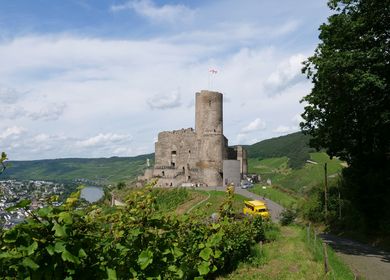
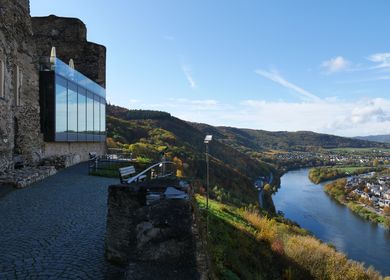
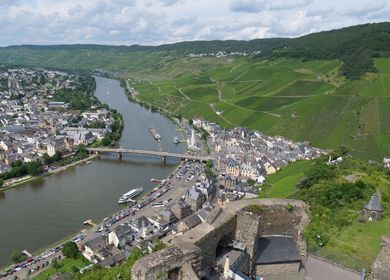
![Landshut Castle in Bernkastel-Kues [Translate to Englisch:] Burg Landshut im Herbst](https://en.bernkastel.de/fileadmin/_processed_/7/0/csm_Herbst_Bernkastel_Mosel_FL_BKS__6__8f502ddfd0.jpg)
